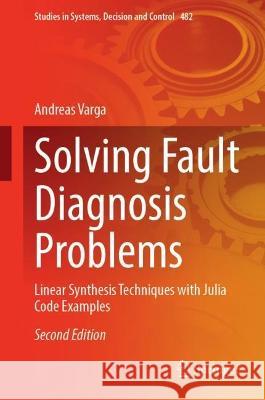Solving Fault Diagnosis Problems: Linear Synthesis Techniques with Julia Code Examples » książka
topmenu
Solving Fault Diagnosis Problems: Linear Synthesis Techniques with Julia Code Examples
ISBN-13: 9783031357664 / Angielski
Solving Fault Diagnosis Problems: Linear Synthesis Techniques with Julia Code Examples
ISBN-13: 9783031357664 / Angielski
cena 605,23
(netto: 576,41 VAT: 5%)
Najniższa cena z 30 dni: 578,30
(netto: 576,41 VAT: 5%)
Najniższa cena z 30 dni: 578,30
Termin realizacji zamówienia:
ok. 22 dni roboczych
Dostawa w 2026 r.
ok. 22 dni roboczych
Dostawa w 2026 r.
Darmowa dostawa!
Kategorie:
Kategorie BISAC:
Wydawca:
Springer
Seria wydawnicza:
Język:
Angielski
ISBN-13:
9783031357664











